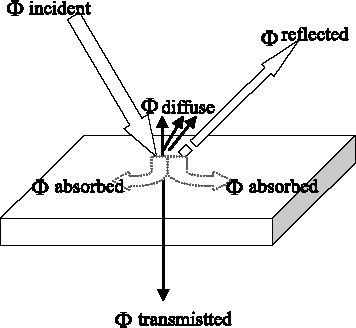2.3. Photovoltaic conversion
2.3.1. Introduction
The transformation of solar radiation into electricity by the photovoltaic process is one of the means of exploiting insolation. The word “photocell” is sometimes used when referring to the photovoltaic (PV) cell. However, we have to note that despite this terminology, no energy is stored in a cell or in any other form, chemical or otherwise. This is not a cell but an instant converter, which will be able to provide electric energy. A cell in complete darkness will behave as a passive component (diode).
Moreover, the solar cell cannot be compared to any other conventional generator of continuous electric power. This is explained by its current-voltage characteristic, which is highly non-linear. The cell is neither a source of constant voltage, nor of constant current.
2.3.2. Photovoltaic effect
When a photovoltaic cell is subjected to the incident light flux, it will interact so that one part of the flux is (Figure 2.10):
– reflected;
– diffused;
– absorbed;
– transmitted.
Figure 2.10. Interaction of a photovoltaic cell with the light flux

The photovoltaic cell must absorb at maximum the incident flux. This is carried out by reducing the reflection and transmission factors. However, the cell will not absorb all the solar radiation. Depending on the technology, it is influenced by all or a part of the spectrum wavelengths.
A photovoltaic ...
Get Electricity Production from Renewables Energies now with the O’Reilly learning platform.
O’Reilly members experience books, live events, courses curated by job role, and more from O’Reilly and nearly 200 top publishers.

